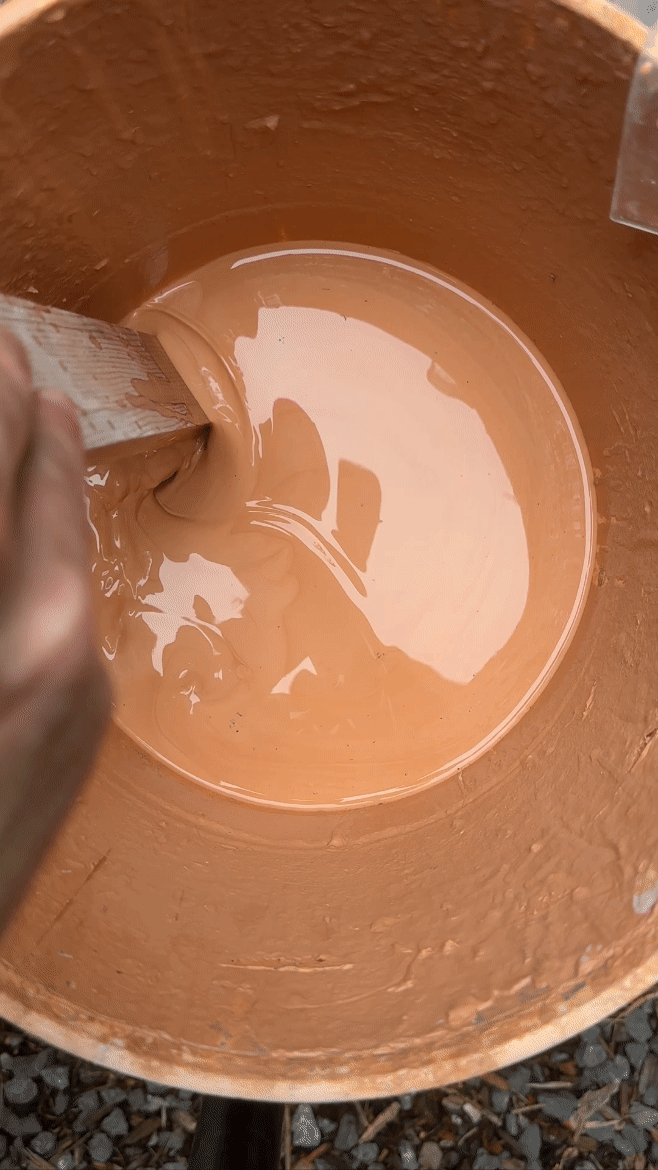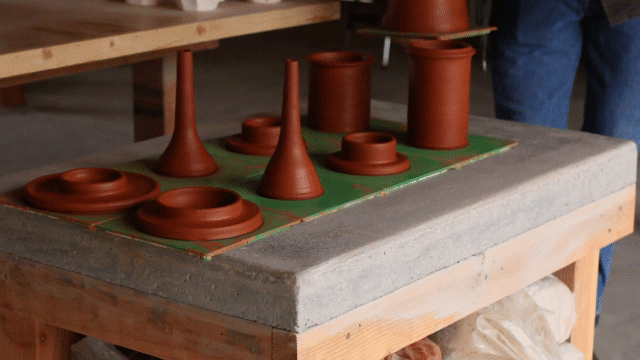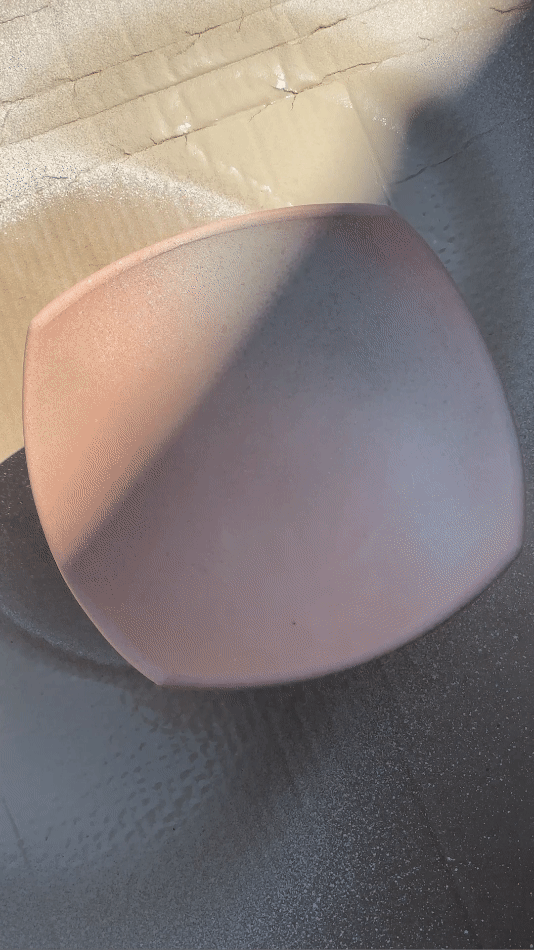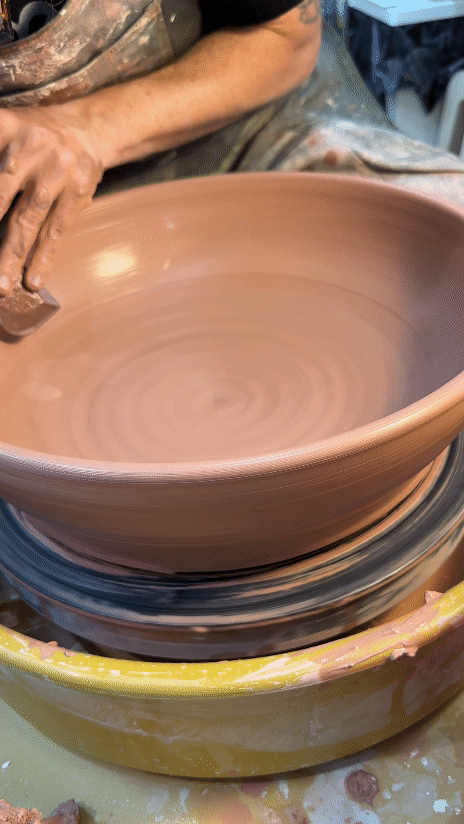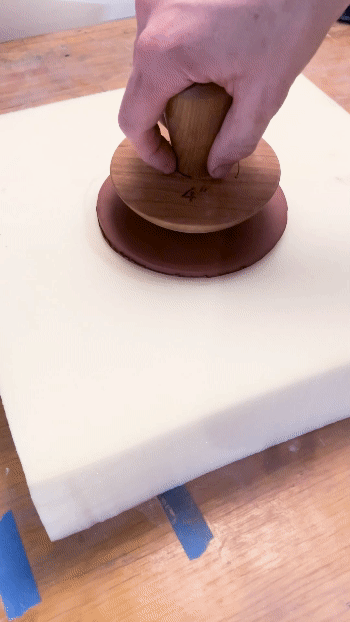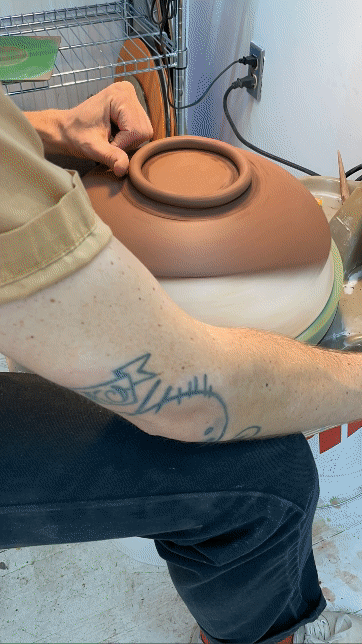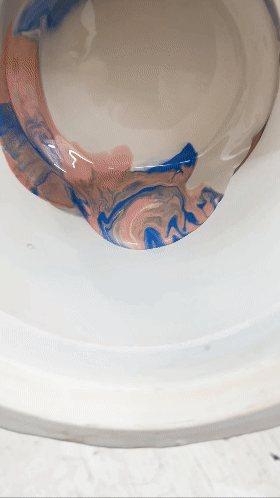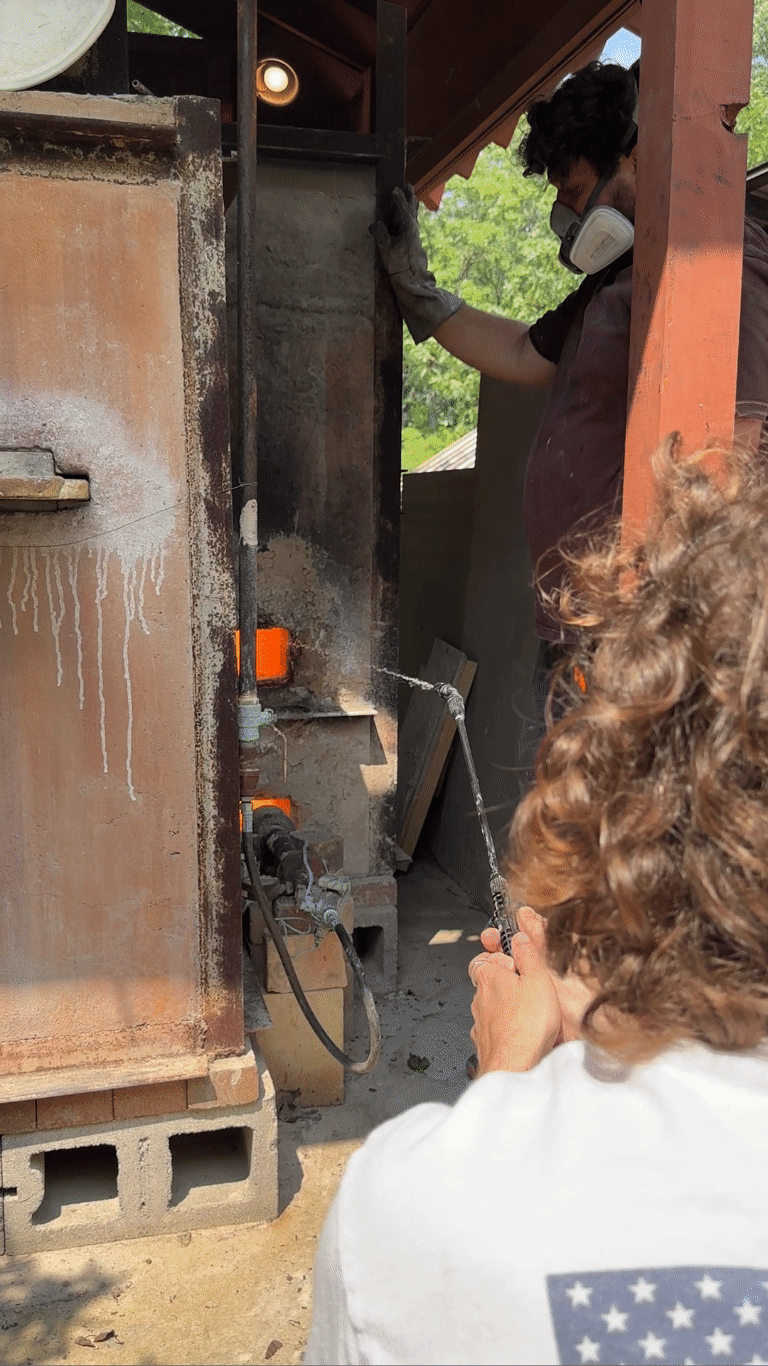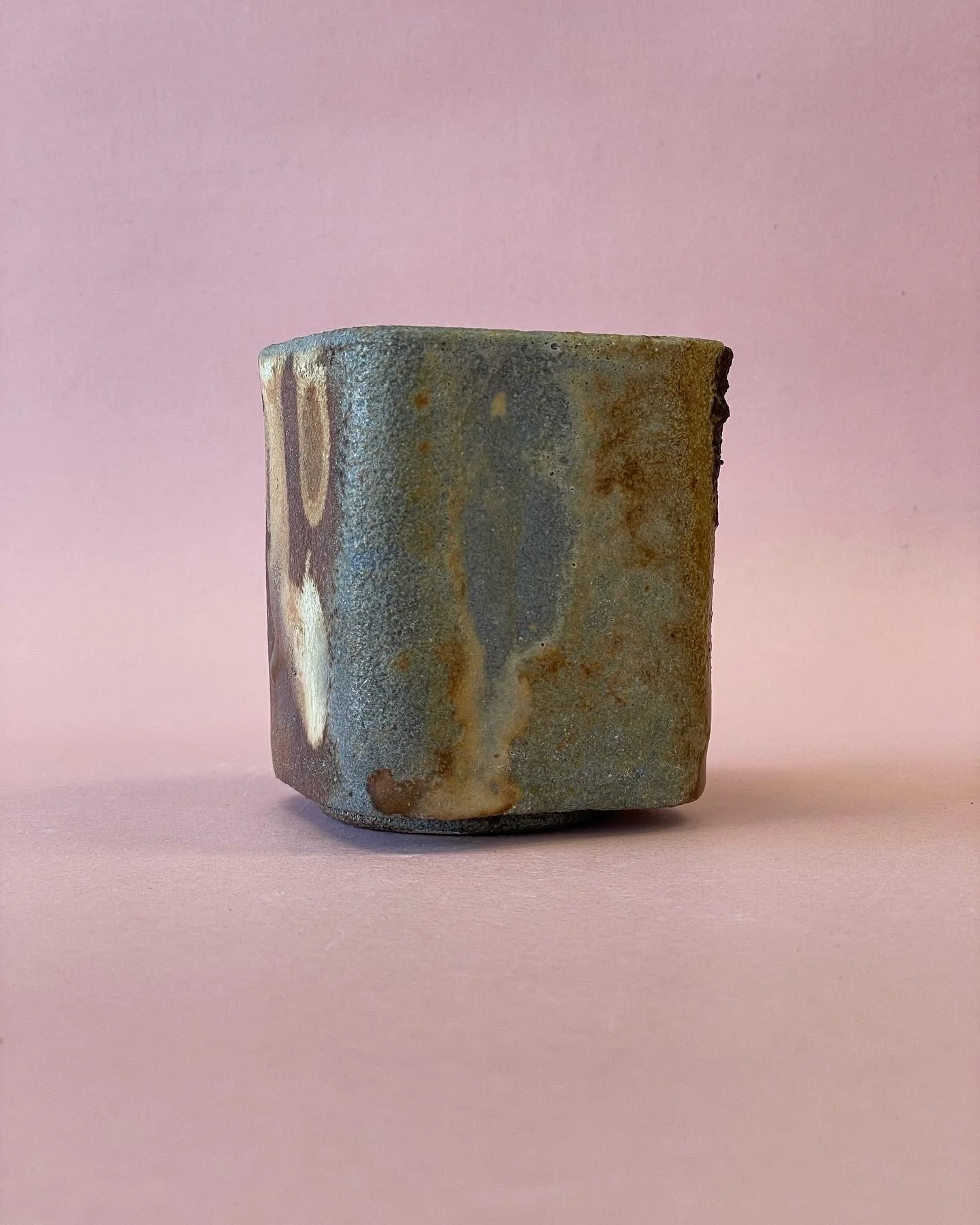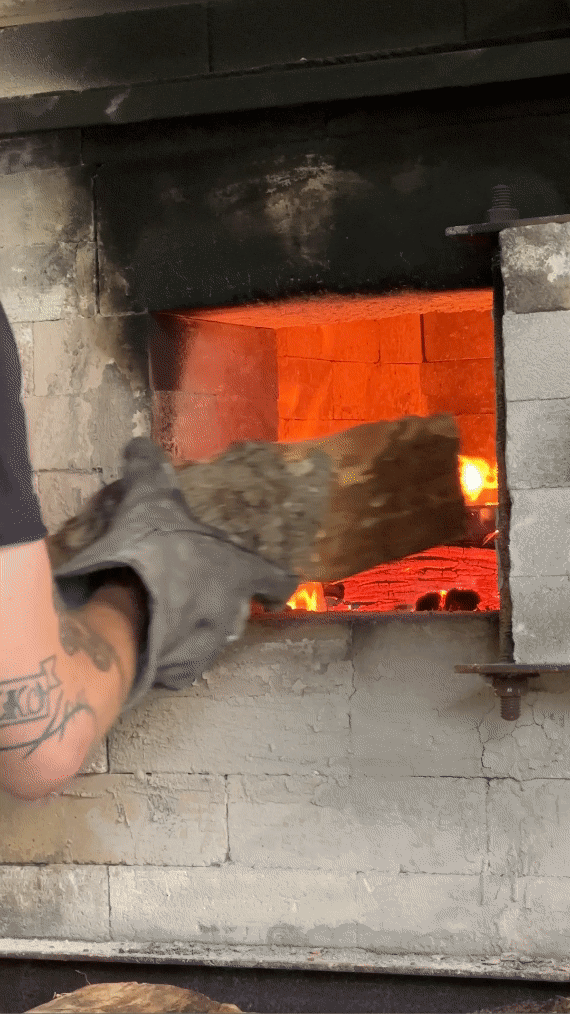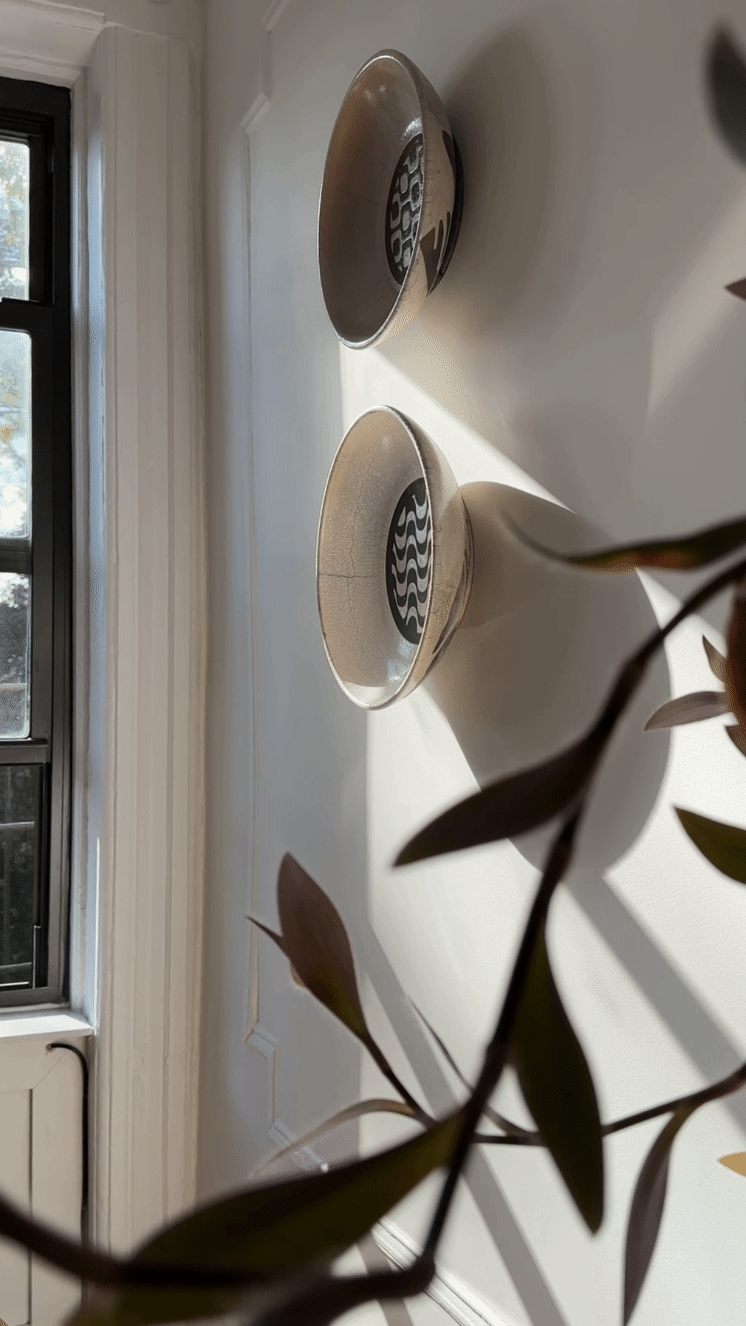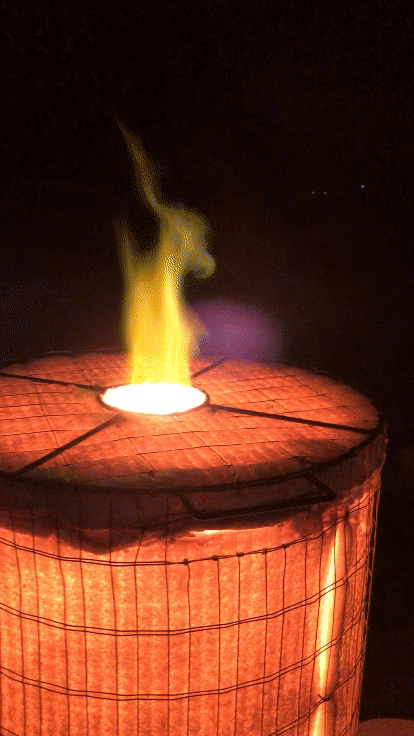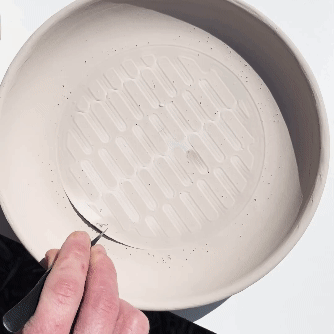I was drawn to functional pottery for years before I gave it a go. I sat down at the wheel for the first time in a drop-in class, and while throwing I found the calm mindful state I needed in my life. I was hooked almost immediately.
Since that class I have careened toward my ten thousand hours. Taking classes, workshops, and leaping for any opportunity to learn more. I love learning new processes and surmounting the different challenges that come up. I have particularly become interested in atmospheric firing and material development. Below you can read a bit more about the materials I use, my process, my firing techniques, and me.
Material
How I select my clay?
I use mostly manufactured clay bodies that are developed to showcase the materiality of the clay when fired in atmospheric kilns. But I also test extensively to make sure each body looks great when fired in a more standard firing.
See firing processes below
I have been interested in working with “wild clay bodies” lately. These are clay bodies that are predominantly made up of clay that is dug out of the ground from more local sources, processed much less, and has less additives materials that change the clay’s character.
I have used a bit of Star Works’ wonderful clay bodies dug direct and made in Star North Carolina — check them out. I also hope to venture into digging and making my own clay bodies and slips in the near future.
More on that to come.
What glazes are used in the work?
The glazes I use are thoroughly researched, and in many cases, developed by me or another artist I trust. Decision making for what glazes to use is predominantly made on aesthetics, but I do put a high priority on using glazes that fit every day use! Meaning that I find or create glazes that:
Are dishwasher safe.
Are food safe.
And in many cases are microwave safe. In this case sometimes the glaze has high amounts of iron or other minerals that could damage the the microwave or the pot.
Please read the item descriptions to be sure.
I good portion of my work has unglazed exterior surfaces. And the color, patterning, and surface is achieved via the way they are fired — whether that is soda firing or wood firing.
See firing processes below
My making process
Each piece is handmade. I employ a wide array of techniques to create the forms in each collection. The function of the final piece drive me to explore different making techniques. I regularly set out to learn a new process to achieve a specific outcome. I am a huge process nerd.
Firing techniques
Soda firing
Soda firing is a ceramic technique that produces unique and vibrant surface effects on pottery. This process involves introducing soda into the kiln during the firing, which creates atmospheric conditions that interact with the clay and glazes, resulting in distinct and surprising finishes.
As mentioned above — I select clay bodies, slips and glazes to specifically interact with this firing technique. I love the effects and patterns that can be created/coaxed out of the work in collaboration with the kiln.
Wood firing
Wood-fired pottery is a traditional and ancient technique that involves using a wood-burning kiln to fire ceramic pieces. This method infuses the pottery with a unique and distinctive character that cannot be replicated through other firing techniques.
As the wood burns, it releases a myriad of gases, smoke, and fly ash. These elements interact with the pottery, creating variations in color, texture, and surface patterns. This interaction between the raw materials and the fire is what gives wood-fired pottery its distinctive and unique charm. It’s this unique charm that I love about atmospheric firing: this collaboration with the kiln and the fire to create the final desired work.
Raku firing
Raku pottery is an ancient Japanese ceramic technique that produces stunning and dramatic results. Derived from traditional tea ceremony vessels, the raku process involves several distinct steps.
Pieces are fired to thier peak temperature, the red-hot pottery is quickly removed and placed in a reduction chamber filled with combustible materials, such as sawdust or leaves. The intense heat and lack of oxygen create an atmospheric reaction that directly influences the final appearance of the glaze.
As the flames lick the piece, vibrant colors emerge in glazes, and transforming any exposed raw clay to a rich dark black. Some key surfaces are crackled glazes, metallic lusters, and smoky textures that add to its allure. I also like to employ resist stenciling to accentuate the contrast between the blackened raw clay surface and the glazed areas. From start to finish, the raku process is a true collaboration between the artist and the elements, resulting in beautiful and one-of-a-kind pottery.
Gas reduction firing
By creating a reduction atmosphere in the kiln, where oxygen levels are limited — the process causes the flame to interact with and draw out a rich and varied color palette from the clay and glazes. Ranging from earthy hues to more vibrant and varied surfaces. This atmospheric firing technique brings out the true beauty of the clay body, enhancing its textures and creating subtle variations in glazes.
The variability of gas reduction firing adds an element of excitement and experimentation to the artistic process. Pushing me as an artist to study the effects of different decisions, and to collaborate with the kiln to reproduce desired effects (or to reduce undesirables ones).
Electric firing
A small amount of my work is created using the more common electric firing process. Unlike traditional wood-fired or gas-fired kilns, electric fired pottery utilizes electricity as the primary heat source. The key benefits of electric fired pottery are:
Access - in bigger cities like New York, it is hard to find atmospheric kilns that fire on gas or wood.
The precision it provides. I have explored bodies of work over the years that center around brighter color palettes. This work benefits from the predictability of the kiln and the consistently oxidized atmosphere.
All that being said… A majority of the work that I produce in electric fired kilns these days works hard to emulate the effects achieved in atmospheric fired kilns. I make less and less of this type of work as I get more consistent access to the firing techniques that truly inspire and drive me.
About the maker
Alex is a an artist living and working in Brooklyn, NY. Coming from a traditional arts background — but coming back to a childhood love for clay well after higher education.
As a designer by day, I became more and more obsessed with the concept of function and utility driven deign. I became obsessed with the small design decisions and craftsmanship of drinkware, tableware, and other useful pottery. My partner, who is a wonderful gift-giver, heard this growing interest and bought me a one time class at Clay by the Bay in San Francisco (where we were living at the time). I sat down at the wheel in that class and found that my usually busy (read: overactive) brain quieted. I came out of the class with a few wonky pots, and the seed for understanding how to play with form and proportion to make useful pots. I have since taken years of classes, workshops, read any book recommended to me, and generally steeped myself in the tradition and art form.
I continue to be drawn to the balance between traditional works and modern design aesthetics. Exploring more rigid geometric forms merging with elements and surfaces that show the artist’s hand.
As you can see in the sections above: the materials and processes are an integral part of the work I make. I am excited to continue to experiment, learn, and take in all I can to allow my work to continue to grow and evolve.



